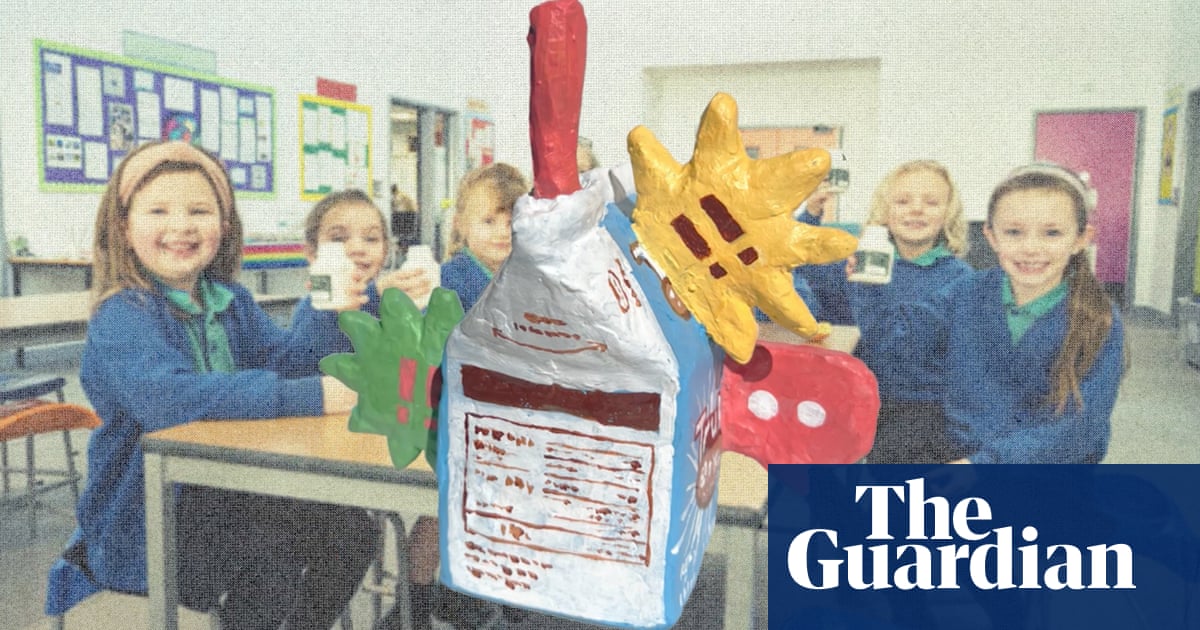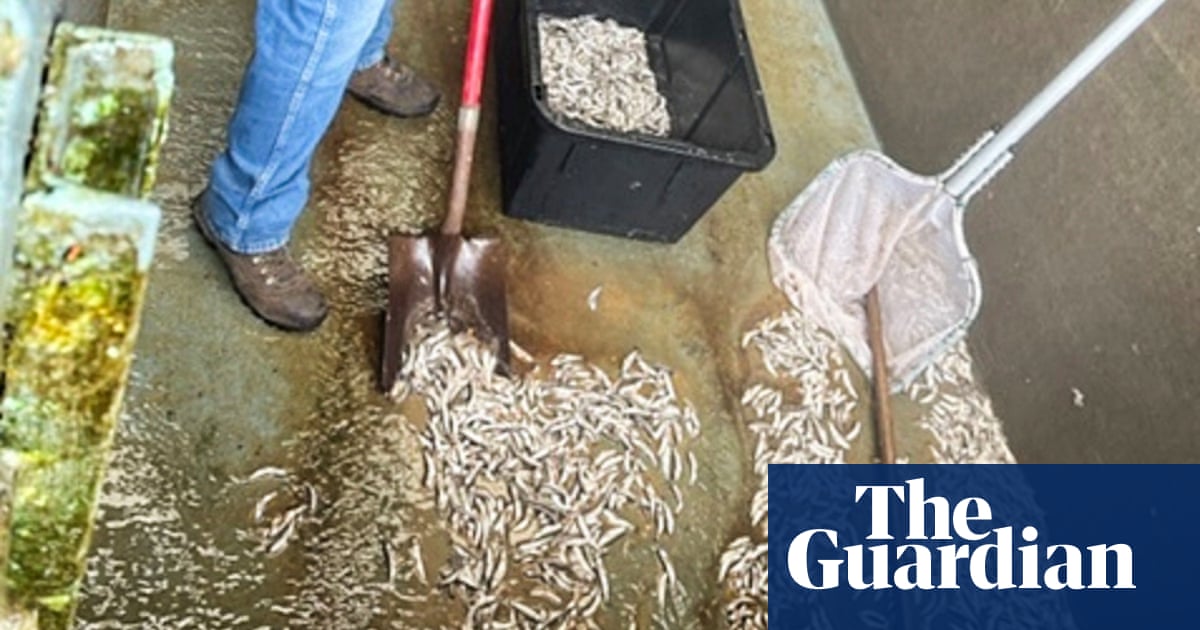Got chocolate milk? As US schools consider a ban, an old, sketchy study holds sway | School meals


This spring, the US Department of Agriculture (USDA) is expected to weigh in on one of the most heated arguments in school nutrition: whether chocolate milk belongs in the cafeteria.
The USDA is eyeing a proposal to allow flavored milk only at high schools starting in the 2025-2026 school year; children in grades K-8 would have access to fat-free or low-fat unflavored milk. The agency reviews national dietary guidelines every five years, and the milk question has generated hundreds of comments from parents concerned about sugar consumption; nutritionists; school workers who believe any milk is better than none; and the dairy industry, which has stoked that belief.
The sweetened drink accounts for more than 70% of milk consumed on campuses. It’s so popular that many school nutrition directors fear that, without it on the menu, more kids will ditch school lunch altogether.
That worry is, in part, influenced by a single influential two-month pilot study conducted in 2011, led by a once wildly popular researcher who has since resigned from his position over allegations of academic and scientific misconduct.
Chocolate milk has long worried some parents who consider it a “gateway drug” to poor eating.
Though there’s clear data on the amount of sugar in flavored milk, good research on the long-term effects of serving the beverages in public schools is much harder to come by. In the absence of multiple good scientific studies, milk has become the subject of policy – and political – fights.
‘A sadistic cafeteria experiment’?
Carrie Frazier, who has two children, first started reaching out to district officials and fellow parents about the nutritional quality of school meals at the Eugene school district 4J in Oregon in 2010. She had a seemingly simple mission: to get chocolate milk off the menu.
She thought that her younger son was filling up on the sugary drink, instead of getting a well-balanced meal. “It seemed like low-hanging fruit,” she said.
After more than a year of organizing parents and lobbying, the district agreed to temporarily remove chocolate milk from shelves for part of the 2011-12 school year.
What happened next surprised her.
The district’s food service management company shared two months of lunchroom data with researchers at Cornell University, who crunched the numbers and arrived at an alarming conclusion: when chocolate milk was taken away from students, not only did milk sales go down but lunch sales did too.Both findings raised concerns because many students eat their healthiest meals at school. And meal programs need to maintain high sales to break even. Districts thinking about removing chocolate milk from schools should think twice about the unintended consequences, the researchers warned.
Suddenly, what began as a local campaign against sugar consumption had national implications. One New York Times columnist called Frazier’s efforts a “sadistic cafeteria experiment” that inadvertently hurt children’s health by reducing milk consumption.
Since then, the debate over flavored milk has flared up periodically across the nation. After the New York mayor, Eric Adams, announced plans to remove chocolate milk from city schools in 2022, the Republican congresswoman Elise Stefanik, whose New York district includes a number of large dairy farms, introduced a federal bill that would have protected “milk choices” and prevented schools nationwide from removing chocolate milk from their menus. The congresswoman proclaimed “Let our New York students drink chocolate milk!” in a press release from her office. The bill did not move forward, but neither did the mayor’s plans to pull the drink from schools.
Marion Nestle, a public health advocate and nutrition professor who has written extensively about conflicts of interest in nutrition research, said: “The dairy industry did a really great job of convincing people that milk was an essential food. That it was the perfect food for kids and everybody should have three servings a day.” Those recommendations “got incorporated into nutritional training so that many, many people trained in nutrition believe that milk is an essential part of diets”.
The USDA has an entire dairy industry-funded program dedicated to researching and promoting dairy products, along with providing nutrition education in schools.
A rock star researcher’s fall from grace
Nutrition research is incredibly hard to conduct well, Nestle points out. Controlled studies are rare and people are notoriously bad at remembering and accurately reporting what they eat from one day to the next. Media are also often ill-equipped to dive into the intricacies of how studies are conducted; iffy research can be disseminated and spread until it becomes accepted wisdom.
Such was often the case with Brian Wansink, a behavioral economist and food psychologist whose work – and much of the work he oversaw as head of Cornell’s Food and Brand Lab – centered on how seemingly small changes could influence diets and health.
In books such as Mindless Eating: Why We Eat More Than We Think, Wansink posited alluringly simple solutions for how people could improve their health and waistlines. Forget willpower. Focus instead on small environmental changes, from your dining room lighting to eating on smaller plates to reduce portion size.
Wansink’s most influential work is arguably in the realm of school nutrition. His studies suggested low- or no-cost ways to make foods appealing to young students. Putting colorful stickers on fruit convinced more children to choose apples over cookies. Giving vegetables fancy names like “X-ray vision carrots” would make them more appealing to students.
The USDA provided $1m to establish a Cornell research lab that Wansink co-directed and also supported the “Smarter Lunchrooms Movement”, which utilized Wansink’s research to “nudge” students into making healthier choices by tweaking cafeteria design: putting vegetables in two different places or giving milk a prominent position in displays.
Wansink’s work came under increased scrutiny in 2016, after he published a since-deleted blog post about self-serve buffets. In it he explained that he had instructed a PhD student to take data from a study that had failed to yield any results and re-analyze it to find something interesting (the resulting study, which went viral, purported to show that men ate twice as many calories when dining with women as they did with men).
Other researchers began combing through Wansink’s work and found inconsistencies in multiple studies. As a result, Cornell began an internal investigation and concluded that he had misreported research data, failed to document and save research, and used problematic statistical techniques. He resigned from the university in 2018 after having more than a dozen papers retracted from nutrition journals – including several studies at the heart of the Smarter Lunchrooms Movement.
Wansink, who is now retired and working on a book with his daughter, stands by his work. The chocolate milk study has not been retracted, but he could not remember if the study was included in Cornell’s investigation of his work. The university declined to respond to questions about whether it had reviewed the chocolate milk study and whether it, too, stood by the chocolate milk research or the Smarter Lunchroom Movement.
Andrew Hanks, who co-authored the chocolate milk study while studying at Cornell and is now an associate professor at Ohio State University, confirmed the study was done after a cafeteria manager in Oregon’s 4J district reached out to the Food and Brand Lab to see if it might use data on chocolate milk consumption. The self-reported data consisted of two months of milk and school meal sales from 11 lunchrooms for the year chocolate milk was removed and meal sales for the year before, along with visual estimates of how much milk was wasted when students only had plain milk.
Because there was no data collected for milk waste in the previous year, researchers compared the amount of milk being thrown away in Oregon schools to the amount of milk discarded in a district in New York state. The milk waste was measured visually: someone simply looking at milk cartons and estimating how much was left.
The paper concluded that further research was warranted, but Wansink said he wasn’t interested in trying to duplicate his work. Further research might have changed the exact percentages, but he doesn’t believe the underlying conclusion – that school lunch consumption decreases when flavored milk is taken off the menu – would also change.
“The results are consistent with what we believe to be true about behavior,” Wansink said. He felt it was a better use of resources to move on to the next “breakthrough idea”.
“I think most of us have ADD, so ‘Nah, it’s just too boring to do it on a big scale,’” Wansink continued.
Using the study as a basis for wide, sweeping conclusions about chocolate milk in schools would probably not be an accurate use of the work, said Hanks. In an ideal world, he added, there would be money for longer, randomized studies that could yield broader insights.
But Wansink was not surprised the study continues to be influential.
“I think we did it hoping it would have a big impact,” he said.
The battle continues
Over the last decade, Frazier, the Oregon mom, has watched as the study has continued to influence public opinion and policy. It has shown up most recently in online comments about the proposed USDA rule changes.
The National Milk Producers Federation refers to it in a submission that argues kids just like chocolate milk’s flavor and that the industry has been diligently working to reduce added sugar in flavored milk. Some comments, purportedly from children themselves, advocate for chocolate milk with reasoning similar to the study’s findings. Sidney from Holt elementary – with no last name or location – wrote: “we are kid[s] … and we want chocolate milk back! Now kids do not eat their lunch at school because there is no chocolate milk.”
A subsequent study in 2020 weighed California students’ milk cartons for waste over several years, and found that removing chocolate milk only had modest impacts on milk consumption and didn’t significantly affect the key nutrients students were getting.
Health and nutrition experts will be closely watching the USDA’s milk and other nutritional moves. Jerold Mande, an adjunct professor of nutrition at Harvard who has served as a senior policymaker at the USDA and the Food and Drug Administration during multiple presidential administrations, said that it would be a “tragedy” if yet another generation of elementary schoolers moved to middle school without new USDA guidelines that address consumption of ultraprocessed foods in their formative years.
Frazier’s son was in kindergarten when she first started raising concerns about chocolate milk. He’s now in college.
“I started this when they were little kids,” Frazier said. “Now they are basically men.”
Source link




